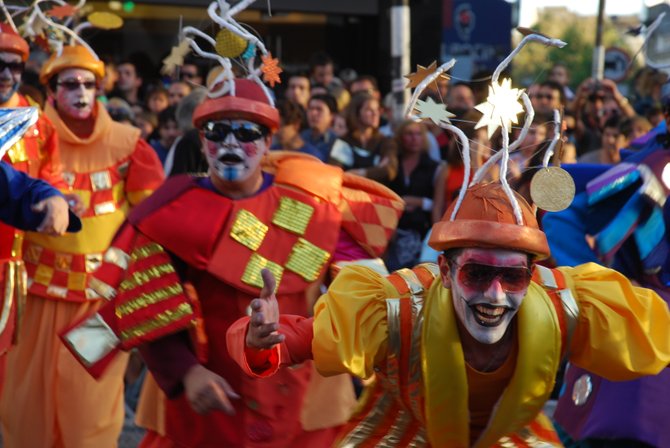 Facebook
Facebook
 X
X
 Instagram
Instagram
 TikTok
TikTok
 Youtube
Youtube

So we’ve heard about some famous worldly Carnavals, and we all know Mardi Gras in New Orleans.
But how about Uruguay’s festivities? Would you guess that they showcase the longest Carnaval in the world? While other countries have already long since cashed in their Fat Tuesday chips, Uruguay is still partying. Starting in late January, celebrations flow until early March for a total of 40 days.
The main parade dances through Montevideo’s main street of 18 de Julio – but the usually conservative Uruguayans don’t stop there. Each little neighborhood shows off their stuff with mini nightly parades.
Another parade during Carnaval is the Llamadas, which derives from the African slaves brought over to Uruguay back in the day.
Before 1956 (year of the first official Llamada), the black people would unofficially gather to make their “calls” of suffering and celebration while dancing and singing in the streets. This has since morphed into a spectacular display featuring candombe drum beats, creative dancing and a crowd of costumes.
Carnaval season here also includes Tablados, shows on stages scattered throughout the city. The acts include: Murgas, a type of singing particular to Uruguay; Pariodistas, groups singing and talking parodies; and Humoristas, singers and entertainers who make light of a multitude of subjects.
Though not nearly as scandalous as in other countries, Uruguay’s Carnaval is a truly prolonged festivity for the eyes and ears.


So we’ve heard about some famous worldly Carnavals, and we all know Mardi Gras in New Orleans.
But how about Uruguay’s festivities? Would you guess that they showcase the longest Carnaval in the world? While other countries have already long since cashed in their Fat Tuesday chips, Uruguay is still partying. Starting in late January, celebrations flow until early March for a total of 40 days.
The main parade dances through Montevideo’s main street of 18 de Julio – but the usually conservative Uruguayans don’t stop there. Each little neighborhood shows off their stuff with mini nightly parades.
Another parade during Carnaval is the Llamadas, which derives from the African slaves brought over to Uruguay back in the day.
Before 1956 (year of the first official Llamada), the black people would unofficially gather to make their “calls” of suffering and celebration while dancing and singing in the streets. This has since morphed into a spectacular display featuring candombe drum beats, creative dancing and a crowd of costumes.
Carnaval season here also includes Tablados, shows on stages scattered throughout the city. The acts include: Murgas, a type of singing particular to Uruguay; Pariodistas, groups singing and talking parodies; and Humoristas, singers and entertainers who make light of a multitude of subjects.
Though not nearly as scandalous as in other countries, Uruguay’s Carnaval is a truly prolonged festivity for the eyes and ears.